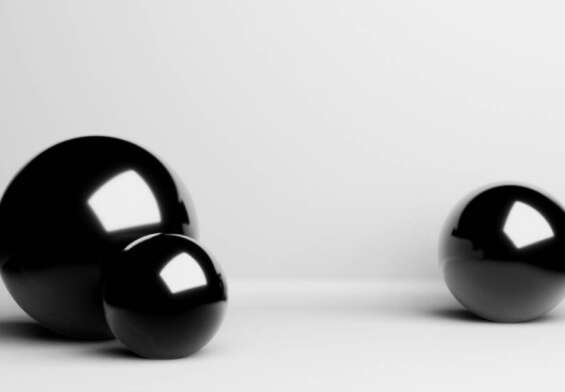
Friction Burns on The Penis Guide for a Better Sex Life!
Hey there, FitGAG readers! If you’re someone who enjoys an active sex life or a little solo fun, you may have experienced the discomfort of a friction burn on your penis. But don’t worry – it’s a common issue that can be easily treated and prevented with some simple tips and tricks. In this article, we’ll dive into everything you need to know about friction burns on the penis, from common causes and symptoms to over-the-counter and prescription treatments. So grab a seat, get comfortable, and let’s talk about penile health!
What is Friction Burns?
Friction burns on the penis occur when the skin is rubbed or scraped against a hard or rough surface, causing damage to the skin’s surface. The friction can cause the top layer of skin to become irritated, leading to redness, swelling, and pain. Friction burns can also cause blisters or peeling skin.
Common Causes of Friction Burns on the Penis
There are several common causes of friction burns on the penis, including:
- Sexual activity: Friction during sexual activity, particularly if it is prolonged or vigorous, can cause friction burns on the penis.
- Masturbation: Like sexual activity, masturbation can also cause friction burns if done too vigorously or for too long.
- Rough clothing or fabrics: Wearing rough clothing or fabrics can cause friction burns on the penis, particularly if they are tight or rub against the skin.
It’s important to note that friction burns on the penis can occur at any age, and they can be more common in individuals who have sensitive skin or allergies.
Symptoms of Friction Burns on the Penis
If you have a friction burn on your penis, you may experience one or more of the following symptoms:
Pain and Discomfort
The most common symptom of a friction burn on the penis is pain and discomfort. This pain may range from mild to severe, depending on the severity of the burn. You may also experience a burning or stinging sensation.
Redness and Swelling
Another common symptom of a friction burn on the penis is redness and swelling. The affected area may appear red or pink and may feel warm to the touch. The skin may also be slightly raised or swollen.
Blisters or Peeling Skin
In more severe cases, friction burns on the penis may cause blisters or peeling skin. Blisters are small, fluid-filled bumps that can be painful and may break open, leaving a raw, sensitive area. Peeling skin may occur as the burn heals, and the damaged skin begins to shed.
It’s important to note that while friction burns on the penis can be painful and uncomfortable, they are usually not serious and can be treated at home. However, if you experience severe pain, bleeding, or signs of infection, you should seek medical attention immediately.
Causes of Friction Burns on the Penis
There are several common causes of friction burns on the penis. In this section, we’ll discuss some of the most common causes:
Sexual Activity
One of the most common causes of friction burns on the penis is sexual activity. Friction can occur during sexual activity, particularly if it is prolonged or vigorous. This can cause damage to the skin’s surface, leading to a friction burn.
Masturbation
Like sexual activity, masturbation can also cause friction burns if done too vigorously or for too long. This is particularly true if you use a rough or dry technique, as this can cause friction against the skin.
Rough Clothing or Fabrics
Wearing rough clothing or fabrics can cause friction burns on the penis, particularly if they are tight or rub against the skin. This can occur if you wear tight-fitting underwear or pants, or if you engage in activities that involve rubbing against rough surfaces.
It’s important to note that while friction burns on the penis can be uncomfortable and painful, they are usually not serious and can be treated at home.
Risk Factors for Developing Friction Burns on the Penis
While anyone can develop friction burns on the penis, there are several risk factors that can increase your chances of developing this condition. In this section, we’ll discuss some of the most common risk factors:
Age
Friction burns on the penis can occur at any age, but they are more common in younger individuals who may be more sexually active or engaged in activities that involve more friction, such as sports.
Chronic Health Conditions
Individuals with chronic health conditions, such as diabetes or poor circulation, may be more prone to developing friction burns on the penis. This is because these conditions can affect the health and integrity of the skin, making it more vulnerable to damage.
Sensitivity or Allergies
Individuals with sensitive skin or allergies may be more prone to developing friction burns on the penis. This is because their skin may be more easily irritated by friction or by certain fabrics or materials.
It’s important to note that while these risk factors can increase your chances of developing friction burns on the penis, there are steps you can take to prevent this condition.
Prevention of Friction Burns on the Penis
There are several things you can do to help prevent friction burns on the penis. In this section, we’ll discuss some tips for preventing this condition:
Lubrication during Sexual Activity
Using a lubricant during sexual activity can help reduce friction and prevent friction burns on the penis. There are many different types of lubricants available, including water-based, silicone-based, and oil-based options.
Using Softer Clothing and Fabrics
Wearing softer clothing and fabrics can help reduce friction and prevent friction burns on the penis. Choose underwear and pants made from soft, breathable materials, such as cotton, and avoid tight-fitting clothing that can rub against the skin.
Taking Breaks during Masturbation
If you masturbate frequently, taking breaks and varying your technique can help prevent friction burns on the penis. Try using a softer technique, using lubrication, or taking a break if you begin to feel discomfort or pain.
It’s important to note that while these tips can help prevent friction burns on the penis, they may not always be effective. If you do develop a friction burn on the penis, there are steps you can take to treat it at home.
First Aid for Friction Burns on the Penis
If you develop a friction burn on the penis, there are several first aid measures you can take at home to help relieve symptoms and promote healing. In this section, we’ll discuss some of the most effective first aid measures:
Cleaning the Area
The first step in treating a friction burn on the penis is to clean the affected area thoroughly with mild soap and water. This can help remove any dirt or debris that may be present and prevent infection.
Applying Cool Compresses
Applying cool compresses to the affected area can help reduce pain and swelling. You can make a cool compress by soaking a clean cloth in cool water and applying it to the affected area for 10-15 minutes at a time.
Using Pain Relievers
Over-the-counter pain relievers, such as ibuprofen or acetaminophen, can help relieve pain and discomfort associated with friction burns on the penis. Be sure to follow the instructions on the label and talk to your healthcare provider if you have any questions or concerns.
It’s important to note that while these first aid measures can be effective for relieving symptoms of friction burns on the penis, they may not always be enough to promote healing.
Over-the-Counter Treatments for Friction Burns on the Penis
If you have a friction burn on the penis that is causing discomfort or pain, there are several over-the-counter treatments that can help relieve symptoms and promote healing. In this section, we’ll discuss some of the most effective over-the-counter treatments:
Topical Creams
There are several topical creams available that can help soothe and heal friction burns on the penis. Look for creams that contain ingredients like aloe vera or hydrocortisone, which can help reduce inflammation and promote healing.
Anti-inflammatory Medications
Over-the-counter anti-inflammatory medications, such as ibuprofen or aspirin, can help reduce inflammation and relieve pain associated with friction burns on the penis. Be sure to follow the instructions on the label and talk to your healthcare provider if you have any questions or concerns.
Wound Care Products
There are several wound care products available, such as hydrogel dressings or bandages, that can help promote healing and prevent infection. These products are designed to create a moist environment that can help speed up the healing process.
It’s important to note that while these over-the-counter treatments can be effective for treating mild to moderate friction burns on the penis, they may not always be enough to promote healing.
Prescription Treatments for Friction Burns on the Penis
In some cases, more severe friction burns on the penis may require prescription treatments to promote healing and prevent infection. In this section, we’ll discuss some of the most effective prescription treatments:
Topical Medications
Prescription-strength topical medications, such as corticosteroids or antibiotic creams, may be recommended to help reduce inflammation and prevent infection. These medications are applied directly to the affected area and may need to be used for several days or weeks.
Oral Medications
Oral medications, such as antibiotics or pain relievers, may be prescribed to help treat more severe cases of friction burns on the penis. These medications are taken by mouth and may need to be used for several days or weeks.
Antibiotics for Infection
If a friction burn on the penis becomes infected, antibiotics may be prescribed to help treat the infection and prevent it from spreading. It’s important to take all prescribed antibiotics as directed, even if you begin to feel better before you have finished the entire course.
It’s important to note that prescription treatments for friction burns on the penis should only be used under the guidance of a healthcare provider.
When to See a Doctor for Friction Burns on the Penis
While most cases of friction burns on the penis can be treated at home, there are certain circumstances when it may be necessary to seek medical attention. In this section, we’ll discuss some of the most common reasons to see a doctor for friction burns on the penis:
Symptoms that Require Medical Attention
If you experience severe pain, bleeding, or signs of infection, such as fever, chills, or pus from the affected area, you should seek medical attention immediately. These symptoms may indicate a more serious infection or underlying condition that requires medical treatment.
Tests and Examinations
If you see a healthcare provider for a friction burn on the penis, they may perform a physical examination and order tests, such as a blood test or urine test, to rule out any underlying conditions or infections. They may also take a culture from the affected area to identify any bacteria or other microorganisms that may be causing the infection.
It’s important to seek medical attention if you are unsure about the severity of your symptoms or if you have any concerns about your condition.
Frequently Asked Questions (FAQs)
In this section, we’ll address some common questions and concerns that readers may have about friction burns on the penis:
Can Friction Burns On The Penis Be Prevented?
Yes, there are several steps you can take to prevent friction burns on the penis. Some of the most effective prevention measures include using lubrication during sexual activity, wearing softer clothing and fabrics, and taking breaks during masturbation.
Are There Any Home Remedies For Treating Friction Burns On The Penis?
Yes, there are several home remedies that can help relieve symptoms of friction burns on the penis, such as applying cool compresses or using over-the-counter topical creams. However, it’s important to seek medical attention if your symptoms persist or worsen.
When Should I See A Doctor For A Friction Burn On The Penis?
You should see a doctor if you experience severe pain, bleeding, or signs of infection, such as fever, chills, or pus from the affected area. Your healthcare provider may perform a physical examination and order tests to rule out any underlying conditions or infections.
Can Friction Burns On The Penis Lead To Long-Term Complications?
In most cases, friction burns on the penis will heal on their own with proper treatment and do not lead to long-term complications. However, if you experience recurrent or severe friction burns, it may be a good idea to talk to your healthcare provider to rule out any underlying conditions or infections.
What Can I Do To Maintain Good Penile Health?
To maintain good penile health, it’s important to practice good hygiene, use protection during sexual activity, and be mindful of any changes in the appearance or function of your penis. If you have any concerns about your penile health, talk to your healthcare provider for further evaluation and treatment.
We hope that this section has addressed some of the common questions and concerns that readers may have about friction burns on the penis. If you have any additional questions or concerns, be sure to talk to your healthcare provider for more information.
Conclusion
Well, that’s a wrap on our discussion about friction burns on the penis, FitGAG readers! We hope that this article has provided you with some valuable information and insights about this common issue. Remember, if you ever experience a friction burn on your penis, don’t be shy about seeking medical attention if you need it. With some simple prevention measures and proper treatment, you can maintain good penile health and enjoy a fulfilling sex life. Thanks for reading, and stay tuned for more informative and engaging content from FitGAG!











